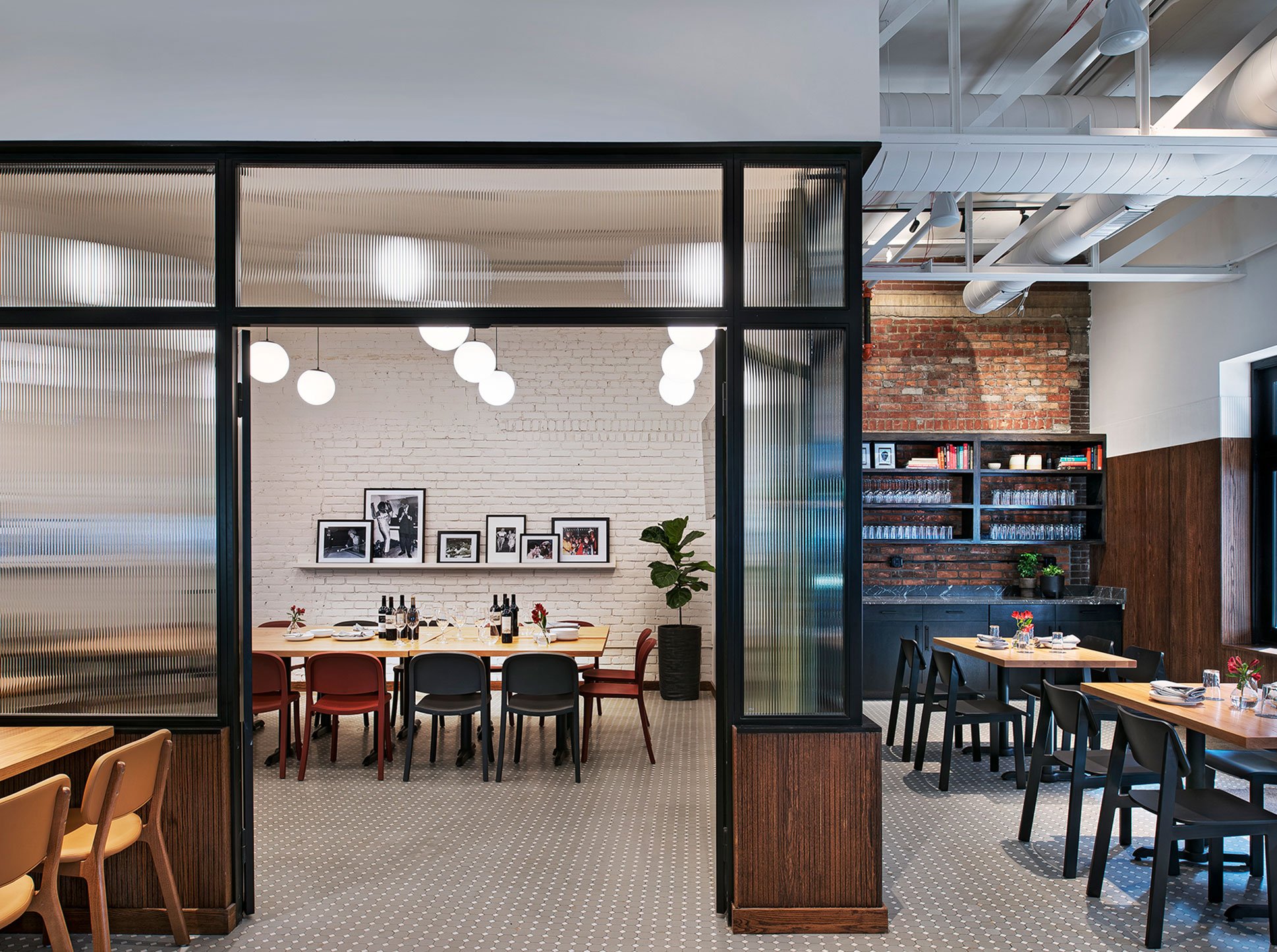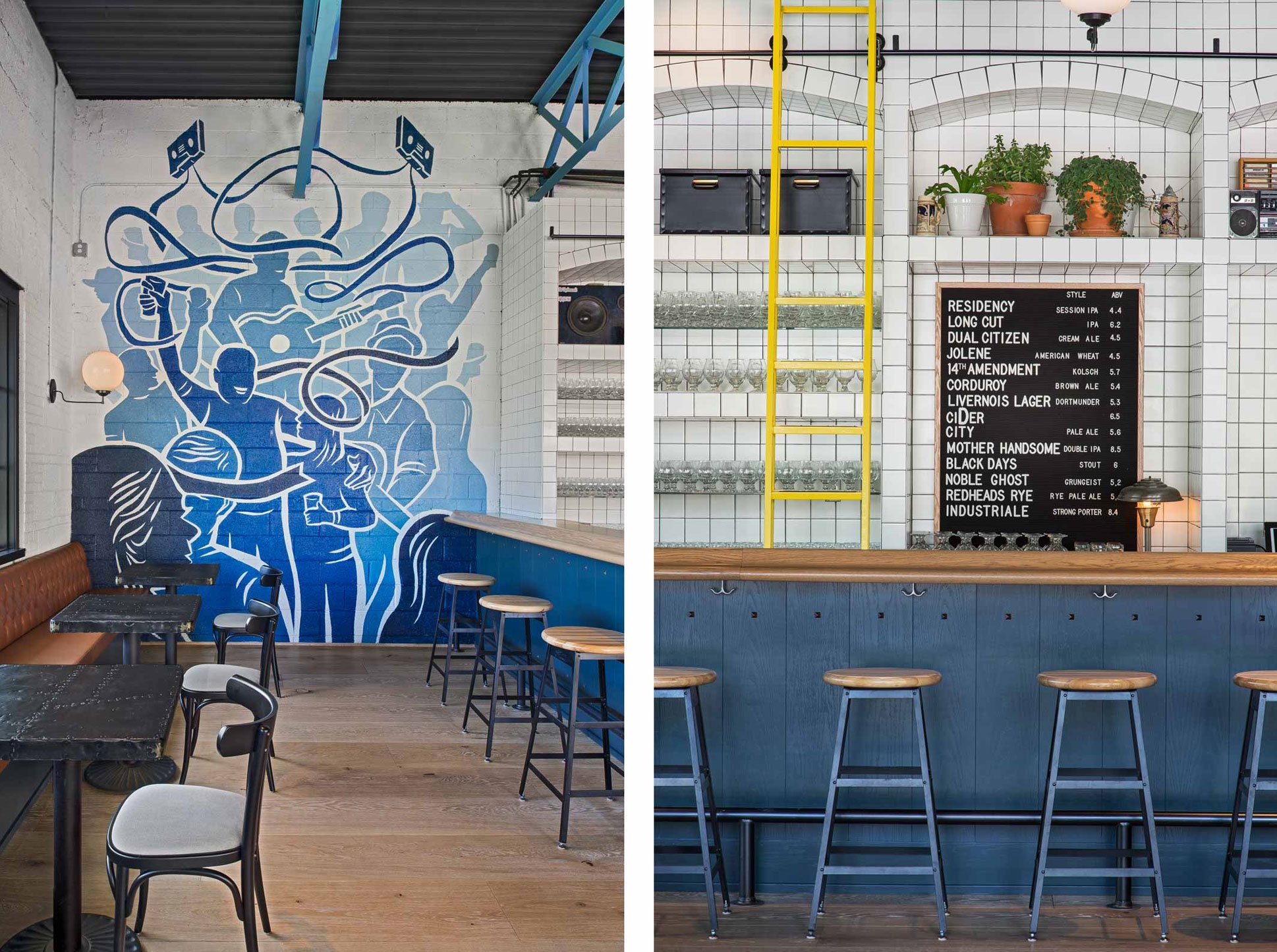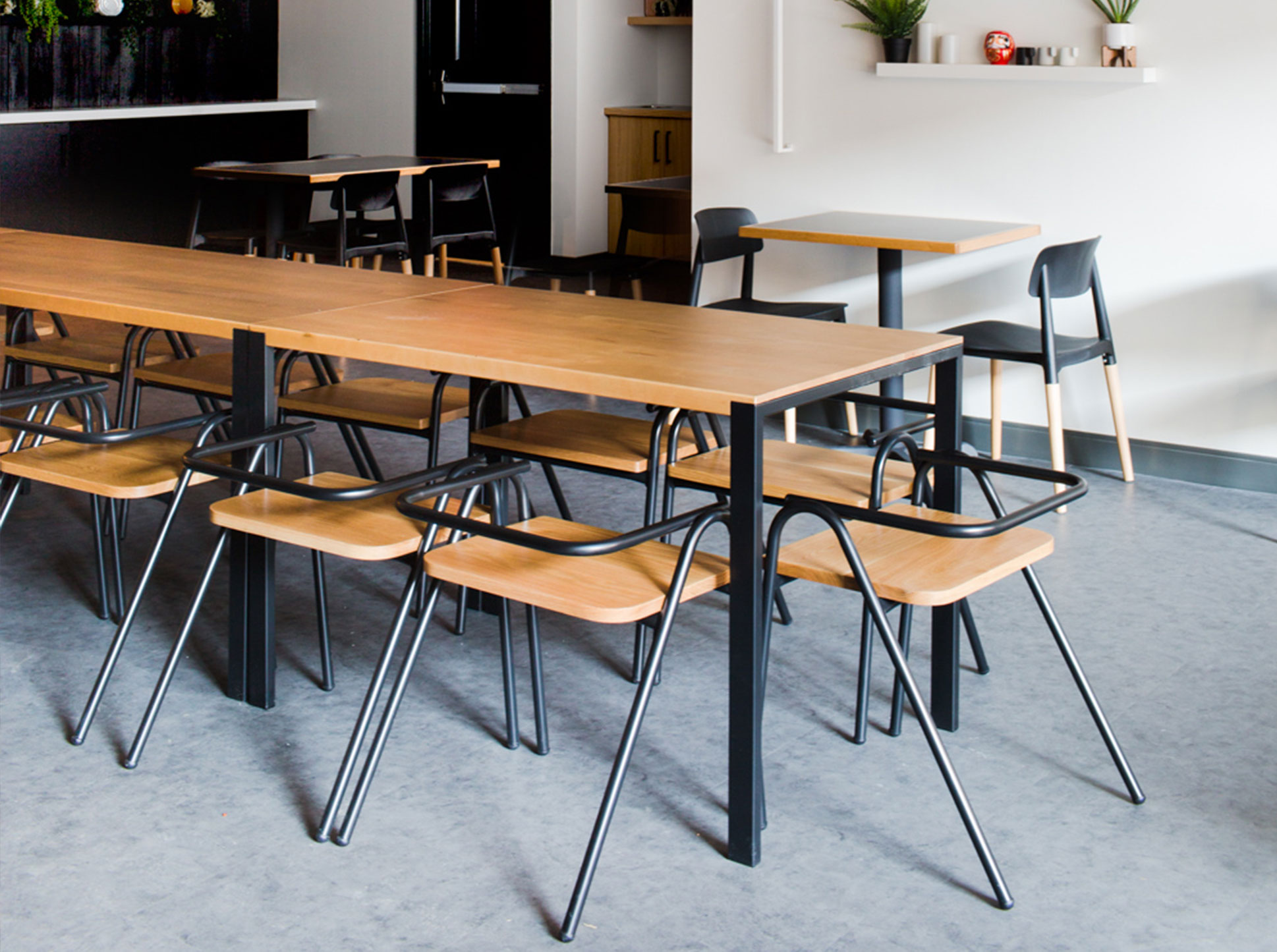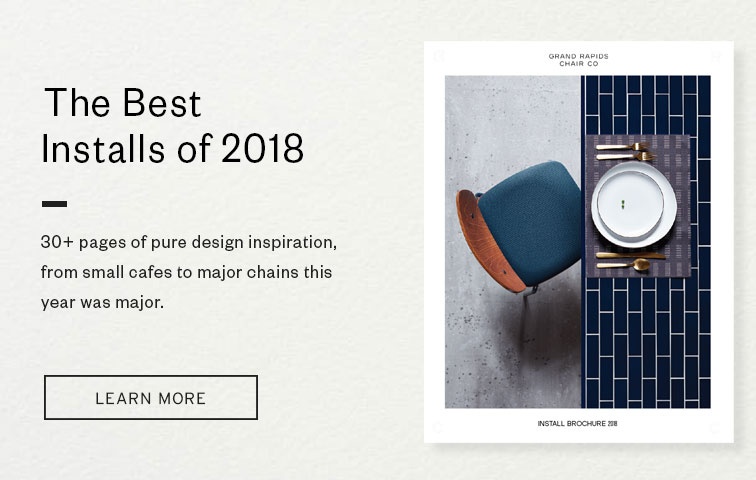We recently attended a restaurant design event where we toured gorgeous spaces in Chicago like Aster Hall and the award-winning Pacific Standard Time. The designers, owners, and chefs spoke candidly about the restaurant’s design successes and failures. That got us thinking, what would other designers say? So, we tapped some of our favorite (and highly successful) interior design friends to learn about their top tips for designing restaurants.
 Half Hurdle Chairs, Brady Table inside of Hibachi Daruma, designed by Studio Grey
Half Hurdle Chairs, Brady Table inside of Hibachi Daruma, designed by Studio Grey
1. The chair does matter.
We craft hospitality floor plans with such care and attention to detail which is fueled by a combination of the ownership's vision and the guest's experience. Patrick Thompson Design strives to program spaces intentionally with a variety of seating types and styles that can cater to any guest and create a unique atmosphere.
Selecting the furniture goes beyond the aesthetic, we do a deep dive to discover the experience the ownership wants to offer the guest. Whether that is a more comfortable, lounge-type setting that entices guests to stay longer for another drink; or a simpler, smaller scale chair that still offers comfort but is more appropriate for a space-constrained fast casual environment.
— Mary Eskin, Design Director of Patrick Thompson Design in Detroit, MI
 Brooke Chairs, Sadie II Chairs inside of Friends & Associates, designed by Patrick Thompson Design
Brooke Chairs, Sadie II Chairs inside of Friends & Associates, designed by Patrick Thompson Design
2. Create zones within the space.
One of our biggest recommendations is to create zones within the space. This allows for a variety of seating types with more intimate areas. Walking in to a room with a big sea of tables can be very uncomfortable...and loud. Creating zones that can be blocked off during slow hours or even used as a semi-private dining space gives the restaurant more flexibility and offers a lively environment for guests at any time of day.
— Amanda Maday, Principal of Studio Grey in Minneapolis, MN
3. Understand current and future customer needs.
When space planning a restaurant, I always start with understanding the need-states of the guest and the operational requirements and initiatives. We consider flexibility and how the space transitions throughout the day as well as the future expansion goals of the brand. At Harrison, we understand the importance of applying a strategic approach to design when creating and re-positioning established brands throughout the world.
— Jen Jackson, Senior Designer, Harrison in Dallas, TX
 Bentwood No. 763 inside of Axel Brewing, designed by Patrick Thompson Design
Bentwood No. 763 inside of Axel Brewing, designed by Patrick Thompson Design
4. See your initial concept through to the end.
A lot of times in design and construction, budgets go over or construction timeline gets extended and it's easy for the client to lose sight of the concept that was established in the beginning. But it's the final layer that is most important - that being artwork and accessories—something that is challenging to document and specify in the early phases. Styling and layering is a very tactile part of the process and is what makes the space come to life in the end.
— Mary Eskin, Design Director of Patrick Thompson Design in Detroit, MI
 Coffee For Sasquatch, designed by Dan Brunn Architecture
Coffee For Sasquatch, designed by Dan Brunn Architecture
5. Create an Instagrammable moment.
Its free marketing! Make a statement piece that guests can interact with, take photos of, or grab selfies with! It’s that moment that makes people remember the space. Of course we want it to be thought of for the great food and service first, but you can't go wrong with having that knock-out, must-see restroom or green wall to get a photo in front of.
— Amanda Maday, Principal of Studio Grey in Minneapolis, MN
For more restaurant design tips and tricks, be sure to check out our guide to restaurant furniture size as well as our most recent installation brochure below.

